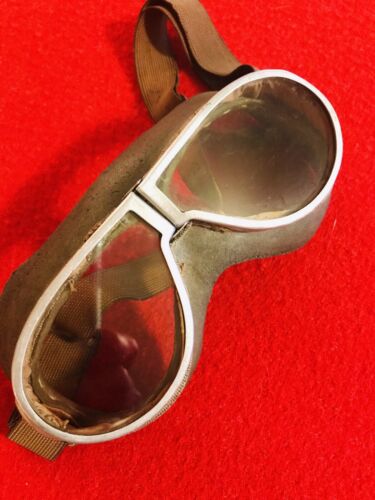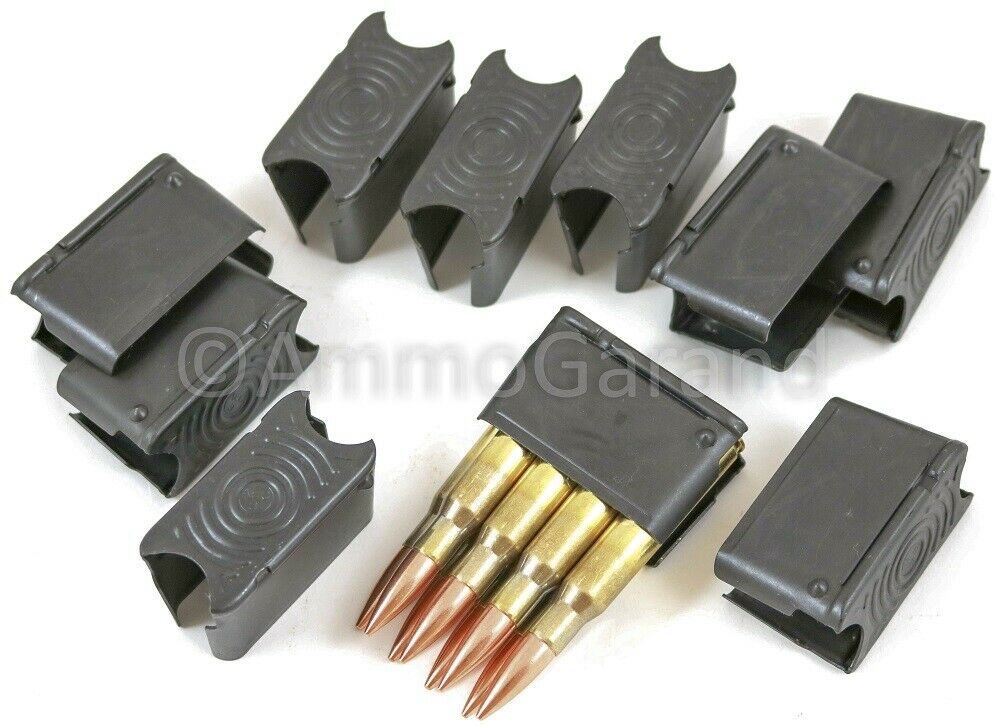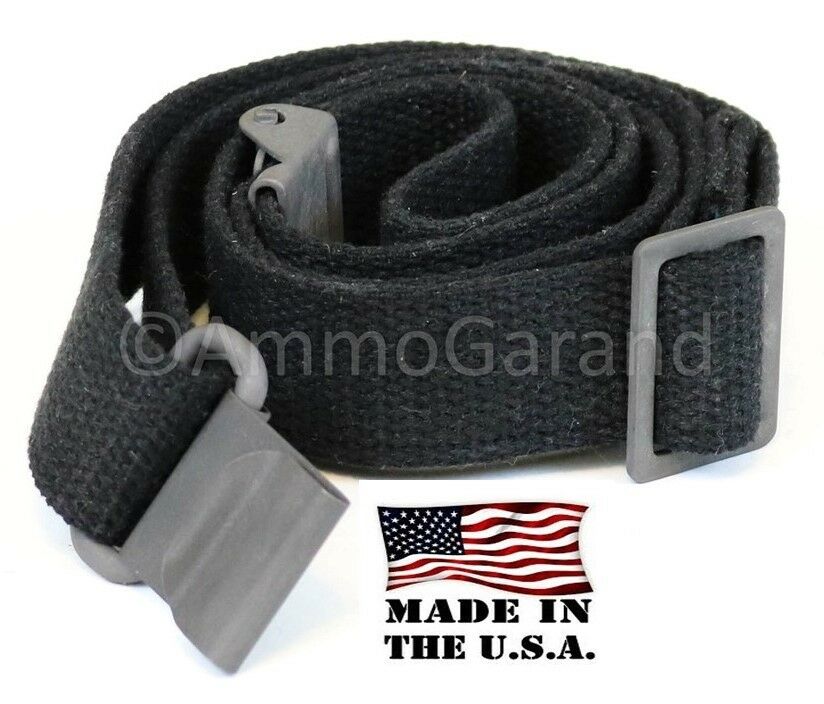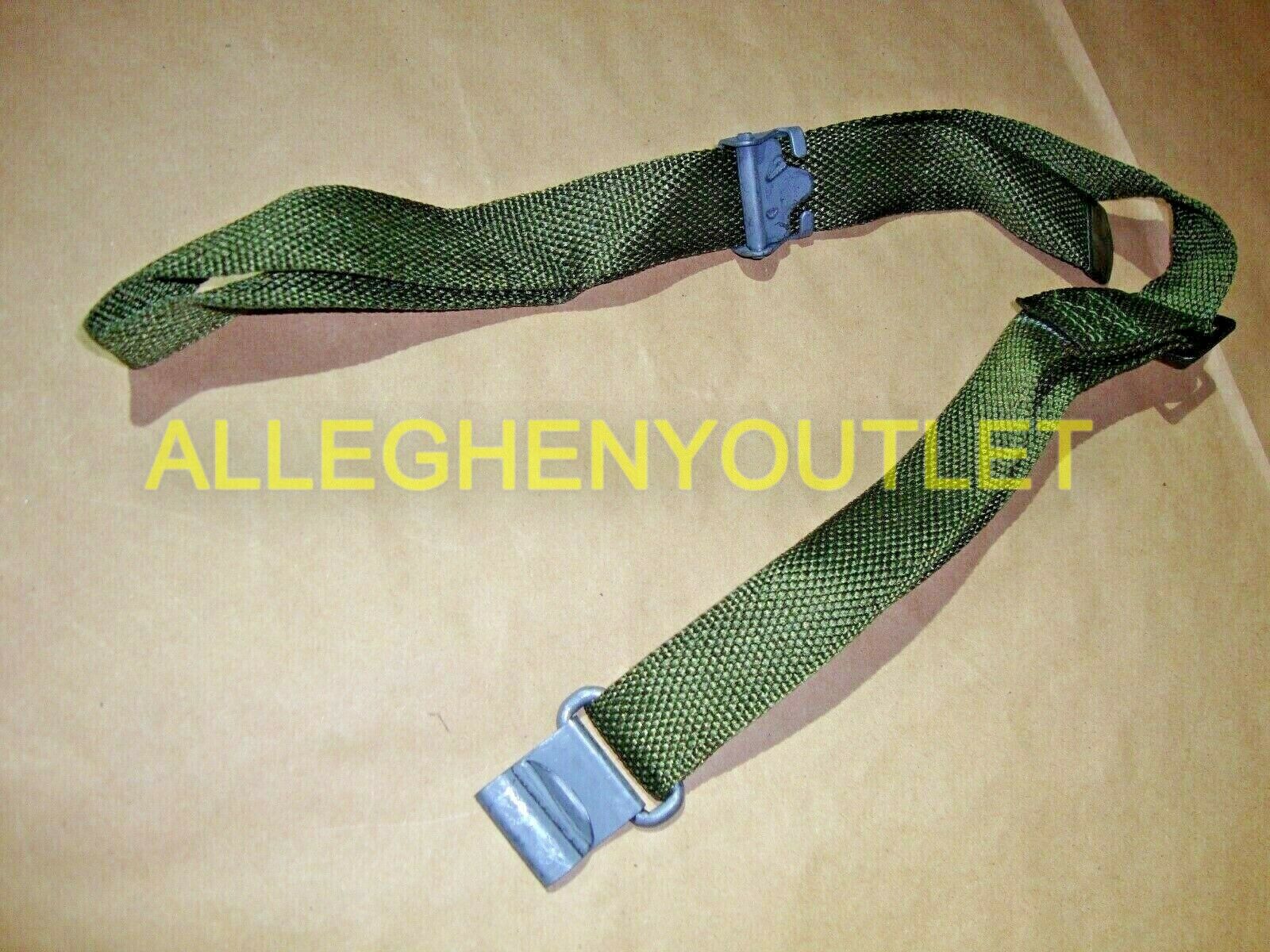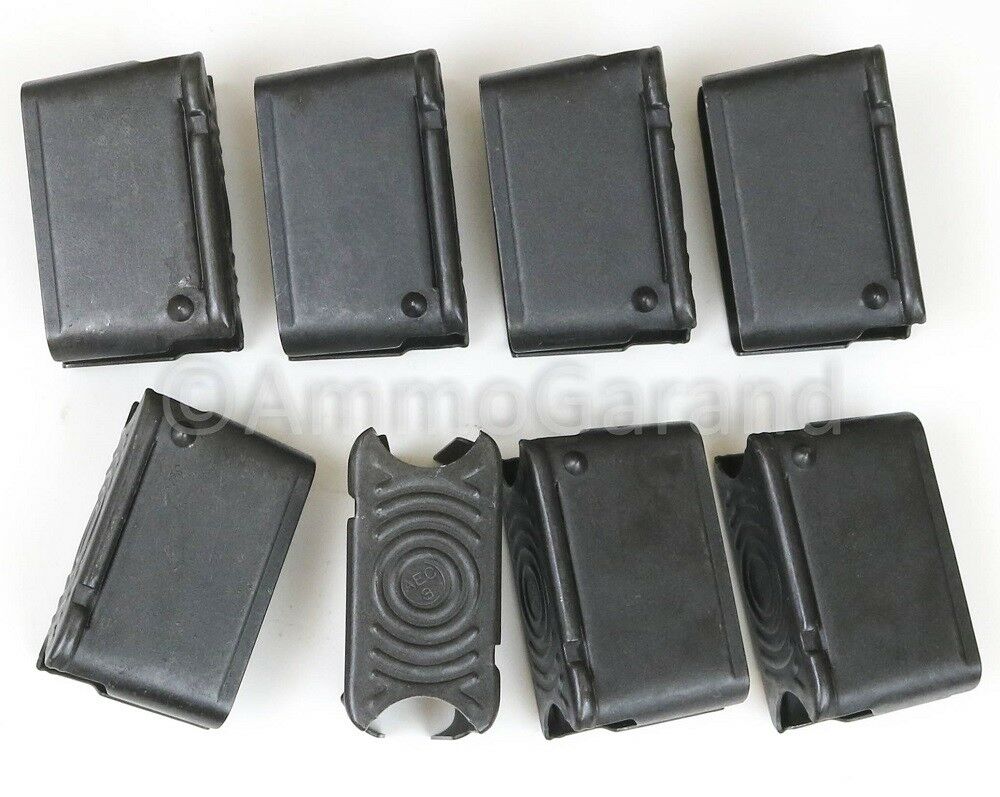-40%
WW2 TANKER USN/USMC AAC Goggles (“RESISTAL”) Sponge-rubber Frame NEAR MINT+++!
$ 198
- Description
- Size Guide
Description
RARE! 100% ORIGINAL Pre-WW2Goggles
(
“RESISTAL”
)
with
Gray
Sponge-rubber Frame
and Original HEAD BAND.
USMC
and
ARMY
Tankers
;
Aviators
and
Pilots
(
USMC USN AAC/AAF
)
;
Motorcyclists
;
Transport
personnel;
Ground
Troops
.
Near Mint+++!
- These Original “
RESISTAL” GOGGLES
with
UNSCRATCHED LENSES
,
100% FREE
of “
DELAMINATION
” and an
INTACT
SPONGE
RUBBER
FRAME with NO CRUMBLING EDGES
are
VIRTUALLY IMPOSSIBLE
to find today!! There are inexpensive reproductions, but these are an
ORIGINAL
EARLY War
pair that have been safely stored away from heat and moisture for over 80 years!!
- These are among the
RAREST
of
ALL
wartime U.S. Goggles to find in
THIS
condition.
- This pair of
"
RESISTAL"
goggles date from PRE-war to EARLY-war they nevertheless were purchased by the
War Department and particularly issued to Tank crews are often seen atop the O.D. PRESSED FIBER M1938 ‘Crash” Helmet in wartime photos of Army and Marine Tankers..
-
Resistal Goggles
were also worn by
military
Aviators
and
U.S. Mail Service Pilots
;
as well as
Tankers
in
Lee’s, Stuart’s,
and
Sherman’s
;
Motorcyclists
and military
Dispatch Riders
on
Indians
and
Harleys
in the 1930s and 1940s. (
llustrated in Mick J. Prodger's definitive
VINTAGE FLYING HELMETS: AVIATION HEADGEAR BEFORE THE JET AGE
, Schiffer, 1992
.)
- Made by
Harry Buegeleisen ("H.B.")
of New York under the trade name of
“RESISTAL.”
This Goggle eventually evolved into what was denominated by the U.S. military as the M1938 Goggle and its use by the military moved from 'aviation' to 'armor.'
-
“RESISTAL”
was a subsidiary of
Stratus and Buegeleisen
.
The
“RESISTAL”
Goggle with its shatter-proof lenses was chosen as standard issue during and after the
First World War
. It featured a lightweight folding teardrop shaped aluminium frame, sprung silk fabric backed with
a one-piece foam rubber face cushion sewn to the fabric.
*****
Particulars:
- Fitted with
RESISTAL’s
proprietary “
Triplex
”
Laminate Clear Shatterproof LENSES
.
-
ZERO
scratches,
“delamination,” or discoloration of the bonding agent used to fuse the two layers of glass (which occurs on 99.9% of the Lenses of these older goggles with the
‘Triplex Safety Glass'
)!
- The bright polished
ALUMINUM FRAMES
are crimped to Khaki
SILK
, and “edged” with a single-piece
GRAY
FOAM RUBBER CUSHION
.
-
ZERO
“ bends or corrosion to the Aluminum!
-
ZERO
“ tears or rot to the Silk!
-
ZERO
“ “flaking” or deterioration of the rubber!
- Stamped on the top edge of each Aluminum Lens Frames (
“RESISTAL” H.B. N.Y."
) for the
Harry Buegeleisen Company of New York.
- The
HINGE
works perfectly!
- The Brown 1 inch
ELASTIC HEAD BAND
shows age and use, but
is still
ELASTIC
and is NOT stretched out or frayed!
and secured with two
SLIDING BLACKENED STEEL ADJUSTABLE BUCKLES.
- The Head Band shows faint
stenciling of a Tanker's A.S.N..
and is fastened to the Frames with
UNMARKED
RUSSET
LEATHER TABS which
show age and wear, but are still intact!
(
NOTE
: the commercial contracts were stamped with the
“
Resistal”
name in 'gold gilt.').
The Leather is still strong and supple!
*****
Exceptional and exhaustive research from "MilitarySunHelmet":
This goggle type was extremely popular from mid-WWI and during the first half of the 20
th
Century; versions were still on sale until at least the 1960’s. Because of their strength and simplicity many manufactures emulated the design and at least three major nations selected versions as official military gear; all three countries originally adopted them as aviation items, and then relegated them to land transport goggles in the 1930’s. Because of the large number of versions made, both as government contract items and commercial pairs sold to the public, there is much confusion about the origins and history of the type.
Today in the UK any goggle of this shape is often called
‘MkII‘s’;
even those not produced for the Royal Flying Corps/Royal Air Force (RFC/RAF). In the United States they are usually referred to as ‘Resistal type’ even though they were originally copied from the
RFC MkI’s
; and
Resistal
made several other styles.
Also routinely called U.S. M38 or M1938 type,
even if they are fur-lined commercial items, pre-1938 or produced after the U.S. military contract lapsed with the introduction of the Polaroid M44/B8. The Imperial Japanese Navy aviation variant is often called the ‘old type’ or ‘pre-eagle (or cats) eye’; Japanese ‘Tank Glasses’ from 1930 to 1945 were also a version of the design. They are also generally referred to as ‘pear shaped’, ‘teardrop shaped’, ‘comma shaped’, ‘hinged goggles’, or ‘General Purpose’ etc. Historically they were called the
‘improved type of Triplex goggles’
(1917, see U.S. versions discussion) or the
‘Triplex type’
(1929, see section on Japanese versions), but complexities in that trade name’s history and product line leads to confusion. Often an unidentified pair will be called one of the above, with the choice of epithet being more indicative of an author’s personal interest than the actual origin of the item.
Perhaps generically we should call them the ‘
Newbold Type’?
Although
hinged
spectacles had been around since their invention (usually to aid storage rather than as an ergonomic measure) and goggles with single pin hinges had been available since at least 1890’s (e.g. 1895 version of
The Lamb Eye Shield
),
Newbold’s 1904 and 1916 designs were the first to have double hinge pins
enabling variable movement between the lenses giving some flexibility which allowed adjustment to the face, rather the stiff variable v-shape of single pin hinge versions.
Triplex, ‘Peeling Back the Layers’
As the origins of this goggle type are linked strongly with the name
‘Triplex’
perhaps an unravelling of that trade name’s early history is needed.
Laminated glass
was originally developed almost simultaneously by a Briton and a Frenchman. An English solicitor, John C. Wood, after taking up driving and finding he needed protection from the elements, but hearing horror stories of injuries inflicted by broken plate glass produced an award winning laminated car windscreen in 1905; obtaining a British patent later that year (9972). Frenchman, Edouard Beneditus was unaware of Wood’s work and continued work on coated glass started by the company
Le Carbone
in 1902, he gained a French patent in 1909, and a British patent, 1911.
Their inventions had various clear non-brittle membranes (e.g. cellulose, celluloid, xylonite, pyralin) self bonded or glued between two layers of glass
as a sandwich. Originally Beneditus used gelatine and Wood canada balsam resin as the bonding agents. If the surface of the glass was struck and failed the non-brittle membrane would not shatter and the bonding material would keep the shattered glass safely attached to the membrane. Benedictus patented his development as
‘Triplex’,
but Wood’s invention is also reported to have been sometimes called the same, so the earliest roots are confusing. Wood set up the ‘
Safety Motor Screen Co.’,
in 1906 producing and marketing laminated glass. Later in France, Beneditus formed the
‘Societe
du Verre Triplex’
in 1911, also producing safety glass auto-products. With the eras cavalier attitude to safety, however, neither was a notable commercial success.
Announced in
The Times
31
st
Oct, 1912 was the registration of the first British company actually called
Triplex;
‘Triplex safety Glass Co. Ltd’
set up by Reginald Deplech; later described as a ‘pioneer British motorist’. This first British
‘Triplex’
had agreements with the French patent holders (note, gelatine is much cheaper and easier to handle than the more durable canada balsam); this London company, originally located in Willesden, was producing
Triplex
glass products from 1913 onwards.
The
Triplex Safety Glass Co. Ltd,
were soon trading from 1 Albemarle St, Piccadilly, London. As well as marketing ‘windscreens and windows, aeroplane windshields, observation panels and night landing stages’, they started to produce goggles at the start of, or just before WWI. Advertisements for their
‘Aero Motor’
goggle range, (models A, B & C; all typical Edwardian goggles) can be found in the press in early 1915.
It seems the
‘Triplex, Goggle Mask and Lens Co., Ltd’,
was set up separately from
‘Triplex Safety Glass Co. Ltd’
when the latter’s
‘A.B. Aero Mask’
was adopted by the British Government for the
RFC
in Dec. 1916 and mentioned in U.S. Government
Special Regulations No.41
in Aug. 1917. It may have become apparent that the goggle side of the business warranted a separated company as mass production was needed, not just of thin optical quality laminated glass, but textiles, leather and metal work. The company became very lucrative and well known due to these and other Government contracts and the brand name itself became valuable; as post war corporate machinations would show.
The Triplex, Goggle Mask and Lens Co., Ltd,
was registered in 1917, as noted in the ‘New Companies Registered’ section of
Flight Magazine, 29
th
Nov. 1917 – ‘TRIPLEX GOGGLE MASK AND
LENS CO., LTD.
With Capital of £3,000, in £1 shares. Optical glass manufacturers, manufacturers of goggles and goggle masks (particularly those fitted with
Triplex
safety glass for the use of aviators), eye glasses, &c. Under agreement (a) with the
Triplex Safety Glass Co., Ltd.,
and (b) with J. H. Bulford. First directors, R. G. M. Delpech and J. H. Bulford.’
It is interesting to notice that as well as
Triplex’s
founder, Delpech; J.H. Bulford was also party to the new company’s setting-up, becoming a principal director.
Newbold & Bulford Ltd (est. 1796)
was an old name in London optical and scientific lens and instrument business. It appears that Delpech may have involved members of this old ophthalmic family firm in setting up the optical side of the
Triplex
business. Harry Newbold, born into the profession, had been involved in designing and patenting protective goggles and spectacles since at least 1900.
In 1920
British Glass Industries
bought a large interest in the
Triplex Safety Glass Co.,
and in 1922 it was taken over completely by another public company also calling itself
Triplex.
Yet again in 1923 the name ‘
Triplex Safety Glass’
was taken over in Britain by the major glass maker Pilkington; they had shown interest in 1912 but negotiations with
Societe du Verre Triplex
had failed and Delpech had gained the patent use at that time. The new owners of
Triplex Safety Glass Co. Ltd
and the ‘old’
Triplex, Goggle Mask and Lens Co., Ltd
went through the courts in 1921-23 in a ‘debenture’ case. This, and very low interim dividend payments by T.G.M.& L. to
T.S.G.
of a symbolic £100 in 1918, would suggest the original relationship was in the nature of a Gentleman’s agreement and that loan settlements and patent use demarcation etc were needed when the
Triplex
name and patent rights were being bought-out. Interestingly the name
Triplex, Goggle Mask and
Lens Co., Ltd
seems to disappear from the historical record at this time.
In 1926 Armory Haskell bought the rights from the French patent holders to manufacture laminated glass in the United States, part financed by Henry Ford. Reginald Delpech had actually contacted Henry Ford after Ford had had an accident, recommending
Triplex
glass; which Ford then imported from England until Haskell’s U.S. production began. Thus creating
‘Triplex Safety Glass Co. of
North America’.
The U.S. Triplex company also produced a ‘Newbold’ like goggle around 1930, identifiable by having a single hinge pin, like a small protruding door hinge.
So as can be seen calling this design ‘Triplex goggles’ is fraught with problems not only due to the several
Triplex
companies operating over the years (e.g. Fig. 8), but also because ‘
Triplex Safety
Glass Co., Ltd’
made at least ten other styles of goggle, as well as spectacles and experimental military vizors. The patent name
‘Goggles for Airmen, Motorists and Others’
is unwieldy and never caught on.
Tentative WWI to 1930’s History and Discussion or ‘Facing the Keiser and Bridging the Atlantic’
So unambiguously the designer of this goggle type was Harry Newbold of the
Triplex Safety Glass Co.Ltd,
London, in or before 1916. They were on sale by May of that year. Commercially called
‘The Featherweight’
in normal goggle configuration (for motoring or aviation), or the
‘Triplex AB Aero Mask’
when attached to a leather face mask
The
RFC
adopted the ‘
Triplex AB Aero Mask’
as official flight gear in December 1916 and under Government contract it became the ‘MkI Goggle Mask’. Although the British military had previously bought and issued a couple of existing goggle types, the
AB Aero mask
was the first type to be specifically contracted and manufactured for the Government, and hence get a ‘Mark’ (Mk) number. In 1918 subtle changes lead to
MkII’s
being produced.
MkII’s
were issued with two sets of interchangeable lenses; tinted and clear. Yellow tinting was usually chosen as it was known to filter out ultraviolet light.
Triplex
produced many military contract pairs and these are marked as such, with a
MkI or II
prefix to the company logo, but it appears Government Air Ministry factories or other manufacturers also had contracts to produce the type.
U.S. Versions
After its precipitous entry into WWI in April 1917 the United States expedited the equipping and mobilization of her military by adopting several items of proven Allied equipment; most famously the British
Brodie
helmet.
Special Regulations No.41
, was issued 15 August 1917, in which it was
stipulated that for the Army Air Arm, then part of the Signal Corps, the ‘improved type of Triplex goggles’ would be used by all aviators, motorcycle messengers and chauffeurs; the individual could choose clear or amber coloured Triplex lenses as required. At that time U.S. manufactures were tending to produce typical pre-war goggle types and laminated glass was not officially in production.
In an understandable effort to achieve self-sufficiency U.S. manufactures immediately began to produce similar goggles to the British Triplex design; as is well documented in the Smithsonian Institution’s collection details. Most notable being the
American Optical
(
Wellsworth Aviglas); H. Buegeleisen (Resistal)
and
New York Eye Protection (Lamoglas)
companies. The
Aviglas
version seems to have appeared first being patented 22
nd
Jan. 1918, it used toughened optical, not laminated, glass. It became a private purchase item, and was not adopted by the Government until 1919, perhaps because of the lens material. They came in clear and a yellow ‘Noviol’ (no violet) version. The U.S. Bureau of Standards tested
Resistal’s
laminated glass
‘Eyetects’
lenses in March and May 1918; leading to their supply to
Navy Aviators
and, after ophthalmic tests, the ‘new’
Resistal NAK
model was recommended to the Army by the
U.S. Medical Research Laboratory
on 20 Jun. 1918.
These developments may have prompted H. Newbold to lodge a U.S. patent application 15
th
Jul, 1918, the patent was granted 18
th
Feb., 1919. The U.S. versions were not identical however, and it is not known if any recompense ever came to
Triplex Safety Glass Co. Ltd
as a result.
Limited numbers of American
‘Newbold types’
got to the Western Front in the last year of the war, with many U.S. aviators having to wear earlier U.S. types (including the pre-Newbold, 1917 ‘Eyetects’ etc),
RAF Triplex models
or French
Meyrowitz-Luxor
type goggles etc.
They were, however, used extensively as aviation goggles post war and through the 1920’s by both military and civilian pilots (Lindbergh wore Resistal’s across the Atlantic in 1927). They were especially popular amongst the U.S. Air Mail pilots.
Although
1918 Resistal NAK
and
Aviglas goggles
were phased out by the military in the late 1920’s
NAK’s
could still be bought as private purchase equipment from such vendors as Karl Ort up until 1941.
They continued to be popular especially amongst fighter pilots who objected to the distortion caused by the curved glass of the official replacements.
Although the Smithsonian Institution states the
American Optical Aviglas
version was copied from a British design, they are interesting as they seem to be a highbred of German frame shape, but with a Newbold like hinge; but using long screws rather than pins, a feature carried through on many later
AO
designs.
The
Salt
frame improvement never made it to the States, the lenses and sprung cup fronts were simply held together by small bent tabs on a soft aluminium frame A raised perforated vent was pressed into the outer radius of the metal frames on most American versions; this can be seen on
Resistal, Lamoglas, Wilson
and
Duplex
etc. On British and Japanese versions, the ventilation relied on permeable knitted silk, cotton or linen; or vent holes in less permeable cup materials (close weave cloth, or leather). The British versions often came with an ‘anti-dimming cloth’ to apply an anti-fogging agent to the lenses to counter this perennial problem.
From Air to Armour
In the late 1920’s and early 1930’s the technologies to produce curved laminated and toughened glass; and non-flammable; scratch resistant bendable plastics were perfected. With the increased field of view possible with curved lenses
‘Newbolds’
and other flat glass goggles became less common in the air.
(Although by mid-WWII flat lenses were back as split lens RAF Mk IV to VIII (still available today) and plastic U.S. B8 (the ancestor of most modern tactical goggles) etc, due to the intrinsic distortion caused by curved lenses).
Although generally retired from the air, in 1930 the Japanese ‘Newbolds’ were modified and adopted as the IJA’s official Tank Goggles. In Britain at about the same time a grey version of the venerable
‘Featherweight’
became the standard
‘General Purpose’ Tank, Transport and Dispatch Rider goggle.
In
1938
the
Resistal N.M.R.
version
(with a sponge rubber face pad) was adopted by the U.S. Army as the M38 tank and motorcycle goggle.
With lend-lease etc. it became a widely worn piece of Allied equipment.
M38s
can be identified by always having the rubber face pad covering the rear hinge area, (if this area is open it is the cheaper commercial R.A.V. model);
M38s
were never fur lined.
Military issue Resistals tended to have unmarked, leather or leatherette tags;
good quality gold embossed leather tags are probably pre-war commercial examples
and completely metal strap attachment points, pinched to the wire frame, are probably post-war. The frames were always marked
‘Resistal, H.B. NY’
(Harry Buegeleisen Co. New York) on the top of both frames.









